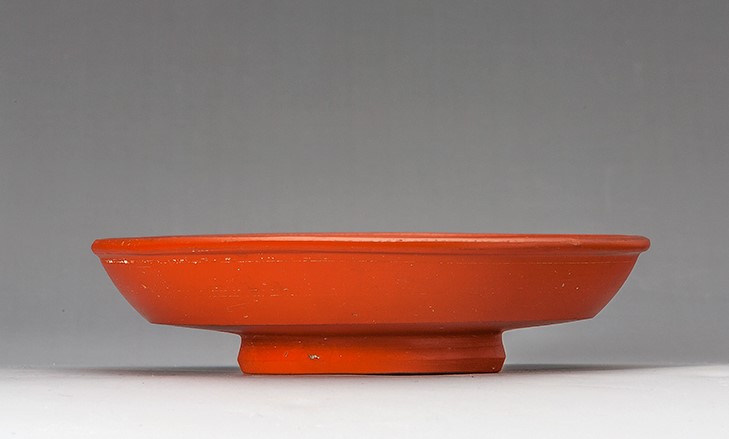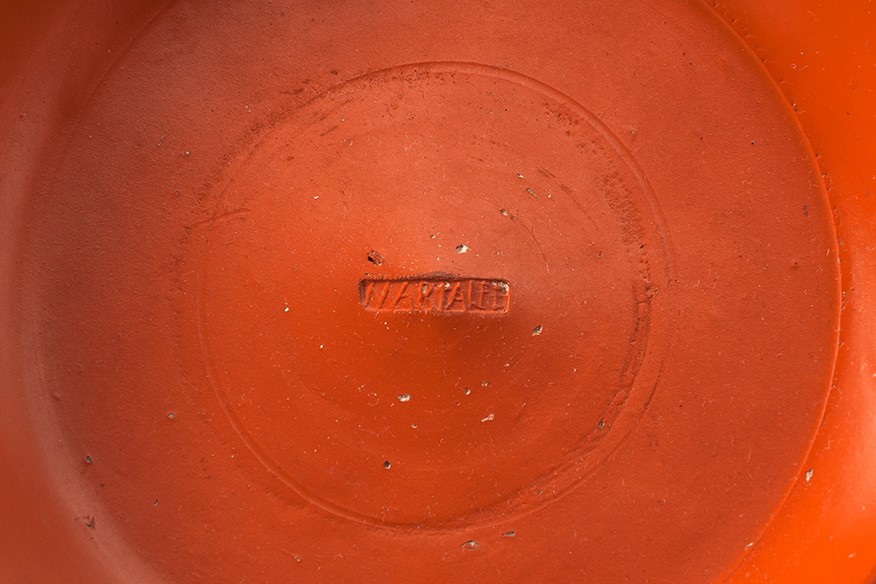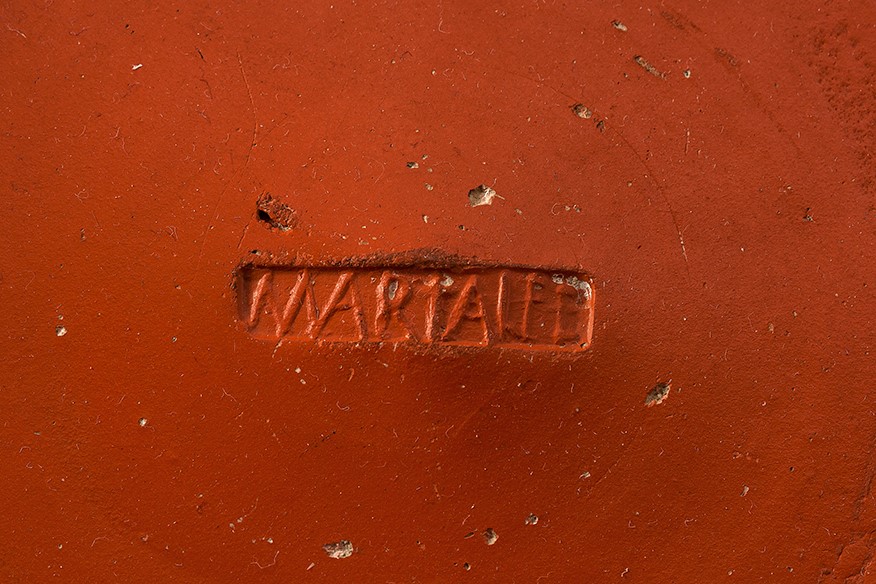Acquisition number: 1985.13
Intact and in good condition. Fairly smooth, rather red clay with some small white inclusions. Shallow bowl/dish with rounded, out-turned lip marked off on its lower side by a shallow groove. Strong carination between lip and lower wall. The floor is domed in the centre; an incised circle creates a central tondo. There is a slight ridge at the junction of floor and lip on the inside. Ring foot, its outer face in two zones; the resting surface is narrow; straight, obliquely-cut inner face; the underside of the floor concave.
Fairly thick, consistent, lustrous red slip applied over all surfaces. On the centre of the floor, a stacking ring from another vessel of the same size.
In the centre of the upper face of the floor, a stamped impression reading:
MARTALFE
Title: Roman Red-Slipped Bowl - 1985.13
Acquisition number: 1985.13
Author or editor: J.R. Green
Culture or period: Roman Imperial
Date: 1st - 2nd century AD.
Material: Clay - Terracotta
Object type: Vessels - Bowl
Dimensions: 180mm (w) × 44mm (h)
Origin region or location: France
Origin city: Chémery-Faulquemont
Display case or on loan: 12
Keywords: Roman, Imperial, Red Slip, Gaul, Stamp, Hattat Collection, Armida Colt
Charles Ede Ltd (London), Antiquities 137 (1985) no. 23a (ill.).
1985.13
Roman Red-Slipped Bowl
Purchased. Formerly in the Hattatt Collection, and previously coll. Armida Colt. Ht 4.4cm; diam. 18cm; length of stamp 2.4cm; ht of stamp 0.6cm.
Intact and in good condition. Fairly smooth, rather red clay with some small white inclusions. Shallow bowl/dish with rounded, out-turned lip marked off on its lower side by a shallow groove. Strong carination between lip and lower wall. The floor is domed in the centre; an incised circle creates a central tondo. There is a slight ridge at the junction of floor and lip on the inside. Ring foot, its outer face in two zones; the resting surface is narrow; straight, obliquely-cut inner face; the underside of the floor concave.
Fairly thick, consistent, lustrous red slip applied over all surfaces. On the centre of the floor, a stacking ring from another vessel of the same size.
In the centre of the upper face of the floor, a stamped impression reading:
MARTALFE
the stamp of Martialis [Martialis fecit]. The T and the I are in A ligature. On the potters in the region named Martialis, see now the definitive catalogue by B.R. Hartley and B.M. Dickinson, Names on Terra Sigillata. An Index of Makers’ Stamps and Signatures on Gallo-Roman Terra Sigillata (Samian Ware) v (BICS Suppl. 102, London 2009) 303-317, and in particular their Martialis iv on pp. 310-314 with the stamp-types 4a and 4b. His factory seems to have been based in Chémery-Faulquemont in what is now eastern France, some way southeast of Metz. It must have been supported not only by good sources of clay but by extensive woodlands to provide fuel for the kilns.
Hartley and Dickinson point out that this was one of the most prolific potteries of the area, though one that produced a notably limited range of shapes. They place his work in the first forty years or so of the second century AD.
The workshops of this area were the most successful exporters to Britain. See in general P. Webster, Roman Samian Pottery in Britain (Practical Handbooks in Archaeology, 13, York 1996) with its excellent bibliography. And there is now https://www1.rgzm.de/samian/home/frames.htm
On the inner face of the foot, a former inventory number, in ink, H 438.
Charles Ede Ltd (London), Antiquities 137 (1985) no. 23a (ill.).


